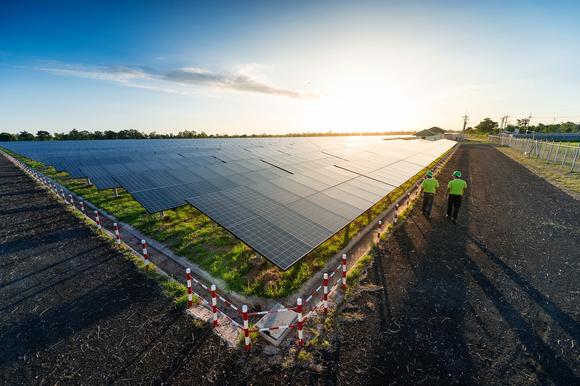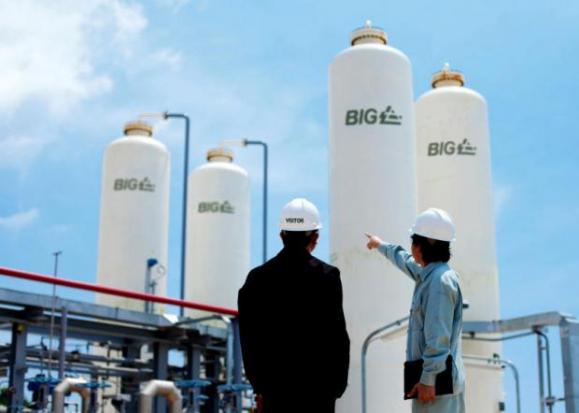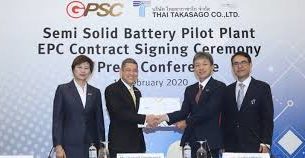
Thailand’s SPCG operates 36 mega-solar farms around the country.
BANGKOK/TOKYO — Thailand is becoming the center of mega-solar power facilities. The Southeast Asian nation is leveraging its biggest advantage in the field — its abundant sunshine — to attract solar power companies to the country.
The companies will likely leverage their success to expand the business to neighboring nations. Such countries have high expectations for the solar business to be the important power source in their rural areas.
Leading Thai solar power utility SPCG Public began developing and operating mega-solar facilities in Thailand in 2010. Combined output capacity of 36 facilities it operates across the country has now reached 260 megawatts, about one-fifth of the country’s total solar-generated electricity.
The company launched two solar farms in Surin Province in June 2014, with output capacity of 7,460kW each. Tens of thousands of solar panels are lined up under the baking sun in an agricultural district in the northeastern province. Electricity generated there is sold solely to the country’s Provincial Electricity Authority, which brings revenue of 240 million baht ($6.92 million) annually to the power plant operator.
Behind the success of the SPCG was assistance from a Japanese company. Encouraged by a strong determination to secure high-quality solar panels for its facilities, the company’s CEO Wandee Khunchomyakong visited the headquarters of Japanese panel maker Kyocera, where he negotiated directly with the management of the Japanese company.
SPCG won the panel supply contract, as well as capital investment worth about 1.5% of its stake, from the Japanese partner. Some 1.1 million panels provided by Kyocera have been allocated to most of SPCG’s solar farms across Thailand.
The company’s stable, efficient power generation has been highly appreciated in the market. Its consolidated revenue boosted to roughly 4.4 billion baht, and the net profits to 1.7 billion baht, for the period ended December 2014. The company aims to double the power generation capacity to a total of 500MW by 2020, Wandee said.
About 70% of the electricity supplied in Thailand relies on gas power generation. The government plans to improve the situation by raising the supply of renewable energy to 20,000MW by 2036, 2.6 times higher than the 2014 level.
Solar power supply in Thailand in 2014 came to 1,300MW, accounting for 17% of the combined renewable energy supplies. The Thai government aims to raise the solar power portion of total renewable energy to 30%, or 6,000MW by 2036.
In an attempt to enhance its solar and other clean energy reliance, the Thai government has introduced a feed-in tariff program, which guarantees a fixed price for power to renewable energy suppliers. This has encouraged new businesses to enter the industry, as well as helping existing suppliers to grow further.
Source: http://asia.nikkei.com/Business/Trends/Thailand-becoming-a-mega-solar-power


